This natural material is used in a wide range of decors and is known for it’s innate stability. Due to it’s long-lasting endurance, it is not uncommon after several years for wood to develop a unusual musty smell, characteristic of many antiques.

Often this smell is accepted as a side effect of owning aged wooden decor, however if you would prefer to to avoid the musk of a retirement home, their are alternatives. In this guide we will review several techniques and tips for the removal of such aged odor, and increase your odds of getting it fresh into it’s original state.

Musty Smell Solution
Musty smells within wood usually develop after it has been in a dark or damp location, and small trace of mold have made it’s home within the fiber. These traces of mold produce a musty odor, but are usually invisible to the naked eye.
1 Step 1: Bleach
 Mix one part bleach with five parts water in the creation a solution that will eat through any microscopic mold particles. Apply this to the entire surface of your wood item making sure that no area is untouched. This will ensure that the bleach eats through all traces of mold and making sure that it never returns.
Mix one part bleach with five parts water in the creation a solution that will eat through any microscopic mold particles. Apply this to the entire surface of your wood item making sure that no area is untouched. This will ensure that the bleach eats through all traces of mold and making sure that it never returns.
2 Step 2: White Vinegar
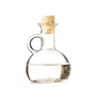 Create a solution of white vinegar and water in equal parts. Use a rag to rub this within the wood fiber ensuring that the entirety of the surface is covered. While this air drys much of the unwanted musty odors will be lifted off of the wood.
Create a solution of white vinegar and water in equal parts. Use a rag to rub this within the wood fiber ensuring that the entirety of the surface is covered. While this air drys much of the unwanted musty odors will be lifted off of the wood.
For an entire guide on removing musty odors from wood, click here.
Mold Smell Solution
This is very similar to musty odors, yet differs in the sense that the mold has become a visible part of your wood. Once it have reached this point, another step is suggested in restoring the wood and eliminating the unwanted mold smell.
1 Step 1: Bleach
 As outlined with musty wood odors, it is important to kill off all traces of mold to ensure that the smell never returns. Create the mixture of one part bleach for five parts water and scrub down the entire surface to remove the mold. Be sure to scrub off all visable traces as well as the areas around it have no visual signs of it. Let this entire area air dry before moving to the next step.
As outlined with musty wood odors, it is important to kill off all traces of mold to ensure that the smell never returns. Create the mixture of one part bleach for five parts water and scrub down the entire surface to remove the mold. Be sure to scrub off all visable traces as well as the areas around it have no visual signs of it. Let this entire area air dry before moving to the next step.
2 Step 2: Hydrogen Peroxide
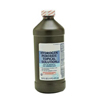 It is not uncommon for mold to discolor wood after is has been stored within a dark and moist location. Hydrogen peroxide in brightening such discoloration spots, as will as aiding in removing odor and killing any remaining mold spore within the grain. By pouring hydrogen peroxide into a clothe and giving the surface though wipe down, it will help in restoring the wood.
It is not uncommon for mold to discolor wood after is has been stored within a dark and moist location. Hydrogen peroxide in brightening such discoloration spots, as will as aiding in removing odor and killing any remaining mold spore within the grain. By pouring hydrogen peroxide into a clothe and giving the surface though wipe down, it will help in restoring the wood.
3 Step 3: White Vinegar
 As a final step, mix a solution of vinegar and water in equal parts. Apply this mixture to the entire surface of the wood, and allow for the vinegar to neutralize any remaining odors that remain within the fiber.
As a final step, mix a solution of vinegar and water in equal parts. Apply this mixture to the entire surface of the wood, and allow for the vinegar to neutralize any remaining odors that remain within the fiber.
For an entire guide on removing mold odors from wood, click here.
Smoke Smell Solution
After years of being around cigarettes, wood can develops a very pungent smoky odor. The longer that it goes uncleaned, the more power the odor often becomes.
1 Step 1: Murphy’s Oil Soap
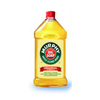 This products works wonders at cleaning wood surfaces and getting unwanted residues out. By applying this to a cloth and rubber this solution into the entire surface of the wood, you cut down the odor and prepare it for the application of lemon oil.
This products works wonders at cleaning wood surfaces and getting unwanted residues out. By applying this to a cloth and rubber this solution into the entire surface of the wood, you cut down the odor and prepare it for the application of lemon oil.
2 Step 2: Lemon Oil
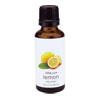 Adding this with citrus does wonders in cutting though smoke odors. By applying this lemon oil to a recently cleaned surface you can be assured that you will be able to eliminate any remaining traces of smoke odors.
Adding this with citrus does wonders in cutting though smoke odors. By applying this lemon oil to a recently cleaned surface you can be assured that you will be able to eliminate any remaining traces of smoke odors.
For an entire guide on removing smoke odors from wood, click here.
Urine Smell Solution
The ammonia within urine can create an unwelcome odor that is not easily removed. By using the following remedies, you can increase your chances of wiping out these odors.
1 Step 1: White Vinegar
 The compound within vinegar works to directly to neutralize the odor produced by ammonia. Create a mixture of vinegar and water in equal parts, and apply the solution to the woods surface to lift off the urine residue and flatten the sharpness of much of the stench. Let moisture air dry and lift off much of the remaining odor.
The compound within vinegar works to directly to neutralize the odor produced by ammonia. Create a mixture of vinegar and water in equal parts, and apply the solution to the woods surface to lift off the urine residue and flatten the sharpness of much of the stench. Let moisture air dry and lift off much of the remaining odor.
2 Step 2: Nature’s Cure
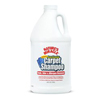 Cleaning pet products like Nature’s Cure introduces active enzymes that work to eat organic materials like urine. By pouring this solution on the area of the accident and rubbing it into the grain of the wood, you can work to neutralize the remaining odor. Enzyme-based cleaning products like this are available at most large super markets and pet stores.
Cleaning pet products like Nature’s Cure introduces active enzymes that work to eat organic materials like urine. By pouring this solution on the area of the accident and rubbing it into the grain of the wood, you can work to neutralize the remaining odor. Enzyme-based cleaning products like this are available at most large super markets and pet stores.
For an entire guide on removing urine odors from wood, click here.
Perfume Smell Solutions
1 Vinegar
 Mix a solution of vinegar and water in equal parts. Wipe down wooden surface area that perfume has been spilled upon. After vinegar has been rubbed in, allow the moisture to air dry out, carrying away much of the perfumes smell.
Mix a solution of vinegar and water in equal parts. Wipe down wooden surface area that perfume has been spilled upon. After vinegar has been rubbed in, allow the moisture to air dry out, carrying away much of the perfumes smell.
2 Baking Soda
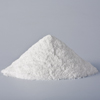 If perfume odor remains, sprinkle a heavy amount of baking soda on the source of the smell. Allow baking soda to sit for 24-48 hours, before sweeping up the remaining odors leaving a freshened wood surface behind.
If perfume odor remains, sprinkle a heavy amount of baking soda on the source of the smell. Allow baking soda to sit for 24-48 hours, before sweeping up the remaining odors leaving a freshened wood surface behind.
[contact]

 After the performance, be sure to open up the windows in the bedroom as well as the rest of the house. This will get air circulating throughout the room and will sweep the smell of your sweaty activities outside.
After the performance, be sure to open up the windows in the bedroom as well as the rest of the house. This will get air circulating throughout the room and will sweep the smell of your sweaty activities outside. If there are soiled tissues or condoms, be sure to dispose of these as soon as possible within an outdoor trash bin. If these are left inside, they can have an effect of evaporating into the walls, and creating a distinctive musk within the room.
If there are soiled tissues or condoms, be sure to dispose of these as soon as possible within an outdoor trash bin. If these are left inside, they can have an effect of evaporating into the walls, and creating a distinctive musk within the room. Depending on how crazy your partner and yourself like to get, you may want to consider washing the sheets. As a rule of thumb, if the fun times lasted longer than 30 minutes, it might be a good call to throw the linens for a detergent-filled rinse and spin.
Depending on how crazy your partner and yourself like to get, you may want to consider washing the sheets. As a rule of thumb, if the fun times lasted longer than 30 minutes, it might be a good call to throw the linens for a detergent-filled rinse and spin. If there is a spray bottle on hand, you can fill it with vodka and spray the room down. Vodka has the effect of getting within fiber and neutralizing odor. As vodka dries, it lifts off much of the unwanted aroma.
If there is a spray bottle on hand, you can fill it with vodka and spray the room down. Vodka has the effect of getting within fiber and neutralizing odor. As vodka dries, it lifts off much of the unwanted aroma. White vinegar is similar to vodka in reducing odor. Once you acquire a spray bottle, fill it partially with white vinegar, and begin spraying down the room. Since vinegar does not have alcohol to speed it’s evaporation process, it will be a good idea to open the window to aid in this objective. Once the vinegar dries, the sharp smell that it produces will go away with it.
White vinegar is similar to vodka in reducing odor. Once you acquire a spray bottle, fill it partially with white vinegar, and begin spraying down the room. Since vinegar does not have alcohol to speed it’s evaporation process, it will be a good idea to open the window to aid in this objective. Once the vinegar dries, the sharp smell that it produces will go away with it.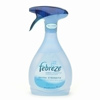 This product does wonders on short notice. If you are working on a tight timeline, be sure to spray the entire room down and consider opening window to speed the drying process. Opening windows will also help sweep away the scent Febreze can leave. This scent can be overwhelming if you are spraying in high quantities and it could be a signal to a visitor that something is being covered something up.
This product does wonders on short notice. If you are working on a tight timeline, be sure to spray the entire room down and consider opening window to speed the drying process. Opening windows will also help sweep away the scent Febreze can leave. This scent can be overwhelming if you are spraying in high quantities and it could be a signal to a visitor that something is being covered something up. While candles are often one of the factors leading to sex, they can also be a handy tool for clean up. By lighting candles after sex, you can burn away much of the remaining odors and add a scented aroma to the room.
While candles are often one of the factors leading to sex, they can also be a handy tool for clean up. By lighting candles after sex, you can burn away much of the remaining odors and add a scented aroma to the room.
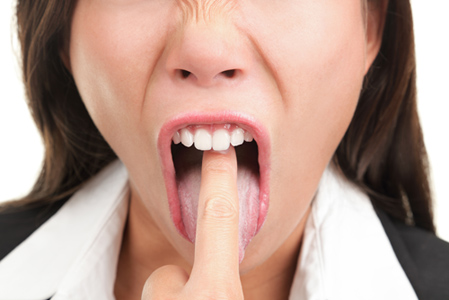

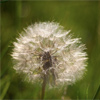 Should your wash and dry cycle not eliminate the vomit smell, you can better your chance of beating it by washing the clothing and air drying it outside. Though it may sound strange, the air dry allows breeze to sweep much of the odor away.
Should your wash and dry cycle not eliminate the vomit smell, you can better your chance of beating it by washing the clothing and air drying it outside. Though it may sound strange, the air dry allows breeze to sweep much of the odor away. Just as air dry has it’s own natural remedies for smell removal, placing clothing in direct sunlight also has many benefits in wiping out unwanted aroma.
Just as air dry has it’s own natural remedies for smell removal, placing clothing in direct sunlight also has many benefits in wiping out unwanted aroma. Baking soda has many qualities that work to neutralize odors and leave your laundry smelling fresh. Within your first washing cycle, add a 1/2 cup of baking soda in addition to your regular detergent.
Baking soda has many qualities that work to neutralize odors and leave your laundry smelling fresh. Within your first washing cycle, add a 1/2 cup of baking soda in addition to your regular detergent.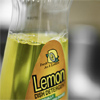 Among mothers, many know of the qualities that dish detergent holds for wiping out odors created by baby vomit. To use this household solution, place your clothing within the sink and hand wash clothing with a half cup of detergent.
Among mothers, many know of the qualities that dish detergent holds for wiping out odors created by baby vomit. To use this household solution, place your clothing within the sink and hand wash clothing with a half cup of detergent. This solution is often used in cleaning fabric and is the primary ingredient in Oxyclean. It works wondering in cleaning and is extremely effective at wiping out odors. To use hydrogen peroxide, you will need to add a half cup of hydrogen peroxide per gallon of water. Dunk your clothing, and work the solution into fiber for several minutes before rinsing out.
This solution is often used in cleaning fabric and is the primary ingredient in Oxyclean. It works wondering in cleaning and is extremely effective at wiping out odors. To use hydrogen peroxide, you will need to add a half cup of hydrogen peroxide per gallon of water. Dunk your clothing, and work the solution into fiber for several minutes before rinsing out.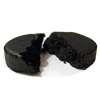 As a solution for removing odor without the use of water, activated charcoal works at slowly leaching wanted aromas from anything within close proximity. This use this remedy, place activated charcoal into two nylon leggings and place it affected clothing within trash bag. Seal trash bag and let sit for 5-7 days before removing freshened clothing.
As a solution for removing odor without the use of water, activated charcoal works at slowly leaching wanted aromas from anything within close proximity. This use this remedy, place activated charcoal into two nylon leggings and place it affected clothing within trash bag. Seal trash bag and let sit for 5-7 days before removing freshened clothing.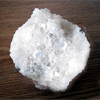


 If someone has smoked within your weed within your car, the first thing that you can do it roll down the windows. Opening the windows and airing out the car has a steady effect of lowering the odor built up within the car.
If someone has smoked within your weed within your car, the first thing that you can do it roll down the windows. Opening the windows and airing out the car has a steady effect of lowering the odor built up within the car. As a quick solution, turn the AC on full blast and spray either perfume and cologne into the vents. This will have a the quick effect of masking the weed odor within your automobile with a strong personalized scent
As a quick solution, turn the AC on full blast and spray either perfume and cologne into the vents. This will have a the quick effect of masking the weed odor within your automobile with a strong personalized scent You can effectively mask weed related odor by smoking several cigarettes within the car. Be sure to keep the windows shut while smoking the cigarettes to make sure that the tobacco odor is effectively infused within the car’s interior.
You can effectively mask weed related odor by smoking several cigarettes within the car. Be sure to keep the windows shut while smoking the cigarettes to make sure that the tobacco odor is effectively infused within the car’s interior.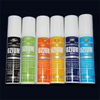 Similar to Febreze, this product works well at neutralizing odors within the interior of a car. Many prefer this product due to it’s strong at masking solution and small packaging.
Similar to Febreze, this product works well at neutralizing odors within the interior of a car. Many prefer this product due to it’s strong at masking solution and small packaging.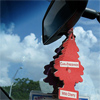 While this is not a solution in itself, it can only help in masking weed odor after someone has smoked within your car.
While this is not a solution in itself, it can only help in masking weed odor after someone has smoked within your car.

 After taking a hit, be sure to blow the smoke away from yourself and your clothing. Be sure to blow to the side or upwards rather then down at your clothing.
After taking a hit, be sure to blow the smoke away from yourself and your clothing. Be sure to blow to the side or upwards rather then down at your clothing. By smoking outside, you can effectively cut down on the majority of the smoke getting caught within your clothing fiber. Within the great outdoors, there is a much greater space for the smoke to disburse into.
By smoking outside, you can effectively cut down on the majority of the smoke getting caught within your clothing fiber. Within the great outdoors, there is a much greater space for the smoke to disburse into. If you are very worried that the smell has not dissipated, try thinking if you know of an laundry mats or friends with washer and dryiers that live close by. If you have an hour and a half to kill, you may want to give your clothes a proper wash depending upon your level of worry.
If you are very worried that the smell has not dissipated, try thinking if you know of an laundry mats or friends with washer and dryiers that live close by. If you have an hour and a half to kill, you may want to give your clothes a proper wash depending upon your level of worry. If the piece of clothing has not gotten any better after several wash cycles, take the damp content out of the washer and place them on a clothes line in direct sunlight. The air and sun will work to draw the remaining odors out while the garments dry.
If the piece of clothing has not gotten any better after several wash cycles, take the damp content out of the washer and place them on a clothes line in direct sunlight. The air and sun will work to draw the remaining odors out while the garments dry.


 Don’t smoke joints in the house. They carry the strongest odors and cause the house, as well as your clothes, hair and hands to smell of weed.
Don’t smoke joints in the house. They carry the strongest odors and cause the house, as well as your clothes, hair and hands to smell of weed.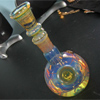 Bongs produce much less marijuana smell than joints. The smoke gets partially purified from traveling through bong water, which causes the smoke to be more purified.
Bongs produce much less marijuana smell than joints. The smoke gets partially purified from traveling through bong water, which causes the smoke to be more purified.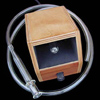 Using a vaporizer allows you to make a significant cut within weed odors within your house. This tool leaves almost no odors behind, and is a great solution for being respectful of non-smoking roommates.
Using a vaporizer allows you to make a significant cut within weed odors within your house. This tool leaves almost no odors behind, and is a great solution for being respectful of non-smoking roommates. Make a solution of 1 part bleach to 10 parts water within a large bucket. Using a sponge scrub down all surfaces including the walls, ceiling and floors with this solution. Be sure that windows are open during this process so that the moisture can evaporate and sweep any remaining traces outside.
Make a solution of 1 part bleach to 10 parts water within a large bucket. Using a sponge scrub down all surfaces including the walls, ceiling and floors with this solution. Be sure that windows are open during this process so that the moisture can evaporate and sweep any remaining traces outside.

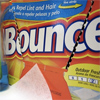 Place two fabric softener sheets at the middle and bottom of the Ugg boots. Set your hair dryer to max heat and aim it down into each foot hole for a minimum of 3 minutes each. Doing this will activate the sheet to release there odor resistant compounds within the woolen interior.
Place two fabric softener sheets at the middle and bottom of the Ugg boots. Set your hair dryer to max heat and aim it down into each foot hole for a minimum of 3 minutes each. Doing this will activate the sheet to release there odor resistant compounds within the woolen interior.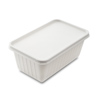 Many authentic Uggs allow you to take the linings out. If you find this to be the case, you can then place them within a sealable container filled partially with baking soda. Upon closing the container, shake thouroughly and let site for a minimum of 24 hours before removing and placing lining back within your shoes.
Many authentic Uggs allow you to take the linings out. If you find this to be the case, you can then place them within a sealable container filled partially with baking soda. Upon closing the container, shake thouroughly and let site for a minimum of 24 hours before removing and placing lining back within your shoes.
 As a final solution, you can take your Uggs to the dry cleaners every few months. They will be able to clean them and remove the odor, without introducing any moisture based cleaning methods notorious for ruining Uggs.
As a final solution, you can take your Uggs to the dry cleaners every few months. They will be able to clean them and remove the odor, without introducing any moisture based cleaning methods notorious for ruining Uggs.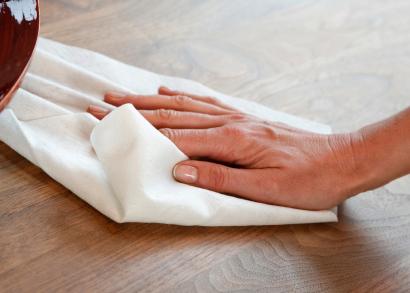


 This products works wonders at cleaning wood surfaces and getting unwanted residues out. By applying this to a cloth and rubber this solution into the entire surface of the wood, you cut down the odor and prepare it for the application of lemon oil.
This products works wonders at cleaning wood surfaces and getting unwanted residues out. By applying this to a cloth and rubber this solution into the entire surface of the wood, you cut down the odor and prepare it for the application of lemon oil. Adding this with citrus does wonders in cutting though smoke odors. By applying this lemon oil to a recently cleaned surface you can be assured that you will be able to eliminate any remaining traces of smoke odors.
Adding this with citrus does wonders in cutting though smoke odors. By applying this lemon oil to a recently cleaned surface you can be assured that you will be able to eliminate any remaining traces of smoke odors. Cleaning pet products like Nature’s Cure introduces active enzymes that work to eat organic materials like urine. By pouring this solution on the area of the accident and rubbing it into the grain of the wood, you can work to neutralize the remaining odor. Enzyme-based cleaning products like this are available at most large super markets and pet stores.
Cleaning pet products like Nature’s Cure introduces active enzymes that work to eat organic materials like urine. By pouring this solution on the area of the accident and rubbing it into the grain of the wood, you can work to neutralize the remaining odor. Enzyme-based cleaning products like this are available at most large super markets and pet stores.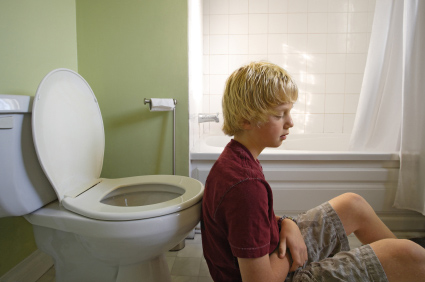

 Once throw-up hits the carpet, you should take action as soon as possible to get the it out. You are in a race against the vomit from setting into the padding located below the carpeting. You will need to use an instrument with a hard edge for this purpose. Spoons are effective tools and help in retrieving the majority of the vomit pieces from the fiber.
Once throw-up hits the carpet, you should take action as soon as possible to get the it out. You are in a race against the vomit from setting into the padding located below the carpeting. You will need to use an instrument with a hard edge for this purpose. Spoons are effective tools and help in retrieving the majority of the vomit pieces from the fiber. Mix a solution of one part shampoo to four parts water, and pour on the affected carpeting. Scrub this location until all remnants of the vomit have risen and sequentially scooped off with paper towels. This is often a dirty task, but it is important to get all of the bits and pieces up and out of the carpet.
Mix a solution of one part shampoo to four parts water, and pour on the affected carpeting. Scrub this location until all remnants of the vomit have risen and sequentially scooped off with paper towels. This is often a dirty task, but it is important to get all of the bits and pieces up and out of the carpet. Mix a cup of club soda and 4-5 tablespoons of white vinegar together and pour over the troubled area of the carpet. Let this sit for 1-2 hours, and proceed to remove the contents of this solution from the carpeting by blot drying with paper towels until the area is dry.
Mix a cup of club soda and 4-5 tablespoons of white vinegar together and pour over the troubled area of the carpet. Let this sit for 1-2 hours, and proceed to remove the contents of this solution from the carpeting by blot drying with paper towels until the area is dry. Mix a cup of water with 1-3 teaspoon of laundry detergent, and proceed to pour solution on the location of the carpet experiencing throw-up odor. After 1-2 hours, rinse this area with additional water, and press moisture out of carpet with paper towels.
Mix a cup of water with 1-3 teaspoon of laundry detergent, and proceed to pour solution on the location of the carpet experiencing throw-up odor. After 1-2 hours, rinse this area with additional water, and press moisture out of carpet with paper towels.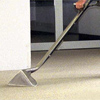 If you have a carpet cleaner, some of the above solutions can still be of benefit before using this household tool. If you do not own a carpet cleaner, you may wish to try some of the above solutions by hand before renting an expensive device.
If you have a carpet cleaner, some of the above solutions can still be of benefit before using this household tool. If you do not own a carpet cleaner, you may wish to try some of the above solutions by hand before renting an expensive device.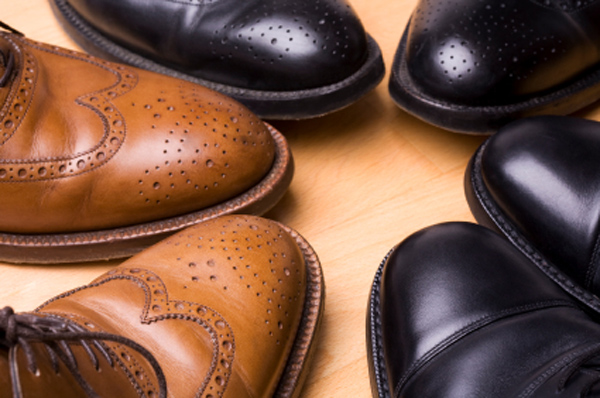

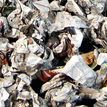 Crumpled newspaper and vanilla is a wonderful combination for removing odors from leather shoes. Once you have crumpled enough newspaper to fill both shoes, sprinkle light amounts of vanilla extract on the paper before filling the shoes. The newspaper will slowly absorb the odor while the vanilla extract adds a desirable aroma. Keep the newspaper wads within the shoes for an entire day for best deodorizing results.
Crumpled newspaper and vanilla is a wonderful combination for removing odors from leather shoes. Once you have crumpled enough newspaper to fill both shoes, sprinkle light amounts of vanilla extract on the paper before filling the shoes. The newspaper will slowly absorb the odor while the vanilla extract adds a desirable aroma. Keep the newspaper wads within the shoes for an entire day for best deodorizing results.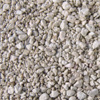 This substance works just as well with cat droppings as it does with neutralizing shoe odors. Measure a half cup of clean cat litter and pour within each shoe. Be sure to lightly shuffle the shoes to evenly distribute the contents along the bottom padding. Next, place the shoes inside an enclosed brown bag or cardboard box. Allow shoes to sit for 24 hours before returning to pour out the cat litter and begin wearing the shoes again.
This substance works just as well with cat droppings as it does with neutralizing shoe odors. Measure a half cup of clean cat litter and pour within each shoe. Be sure to lightly shuffle the shoes to evenly distribute the contents along the bottom padding. Next, place the shoes inside an enclosed brown bag or cardboard box. Allow shoes to sit for 24 hours before returning to pour out the cat litter and begin wearing the shoes again.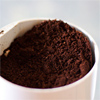 Coffee grounds can absorb odors and freshen by enhancing the shoes with subtitle coffee bean aroma. Pour coffee grounds within a filter and push contents within the footwear to the toe area of the shoe. Allow for the shoes to sit for 24-48 hours before removing the filter containing the grains. Take precaution to avoid spilling any grains within the interior of the shoe as this may cause staining within the padding.
Coffee grounds can absorb odors and freshen by enhancing the shoes with subtitle coffee bean aroma. Pour coffee grounds within a filter and push contents within the footwear to the toe area of the shoe. Allow for the shoes to sit for 24-48 hours before removing the filter containing the grains. Take precaution to avoid spilling any grains within the interior of the shoe as this may cause staining within the padding. In the worst case scenarios, replacing the cushioning within the leather shoe is an effective and affordable solution for treating odors within leather shoes. Replacement cushions can be purchased starting at 10 dollars.
In the worst case scenarios, replacing the cushioning within the leather shoe is an effective and affordable solution for treating odors within leather shoes. Replacement cushions can be purchased starting at 10 dollars. By rotating shoes, you are provide the shoes a daily breather to aerate in-between uses. Less sweat accumulation, means that less odorous bacteria will be living within the shoe. This in invaluable in cutting down on built up foot odors within leather shoes.
By rotating shoes, you are provide the shoes a daily breather to aerate in-between uses. Less sweat accumulation, means that less odorous bacteria will be living within the shoe. This in invaluable in cutting down on built up foot odors within leather shoes. By ritualistically using activated charcoal within your shoes when they are not in use, you can be assured that they never develop an odor. After enclosing the charcoal within an old pair of nylon leggings, the same homemade insert can be used for multiple months before loosing some of it’s effectiveness.
By ritualistically using activated charcoal within your shoes when they are not in use, you can be assured that they never develop an odor. After enclosing the charcoal within an old pair of nylon leggings, the same homemade insert can be used for multiple months before loosing some of it’s effectiveness.
